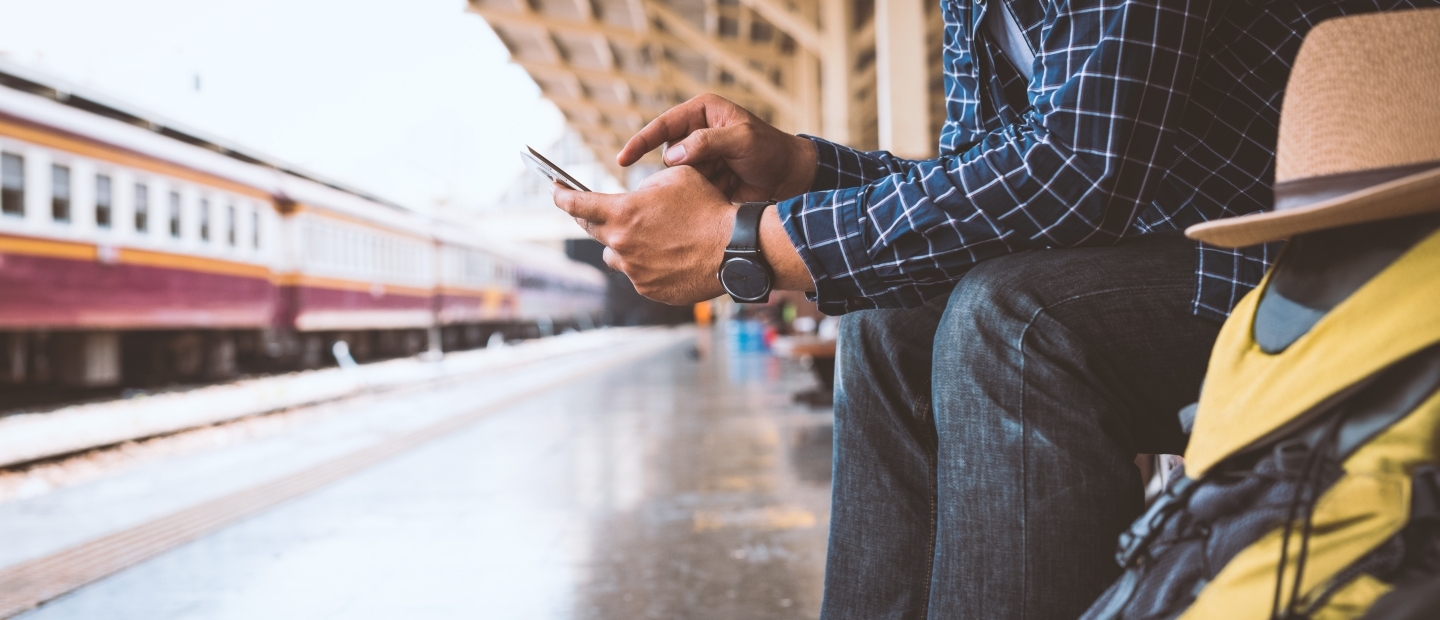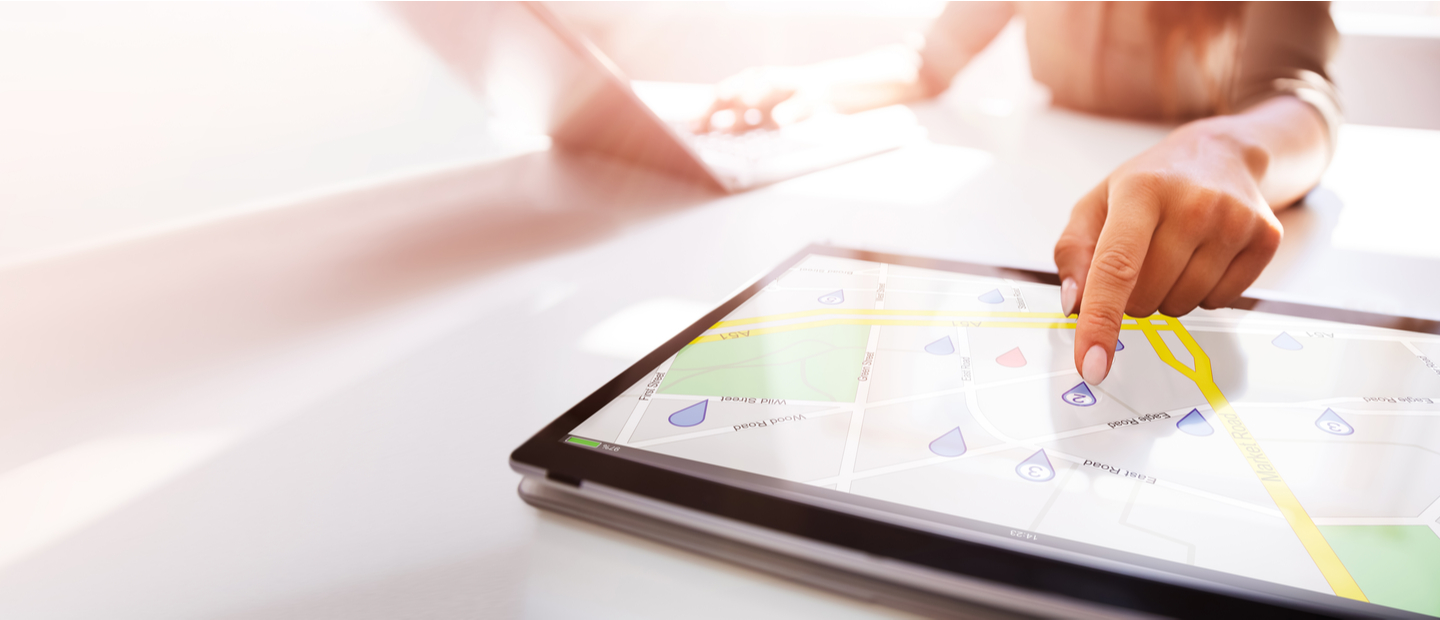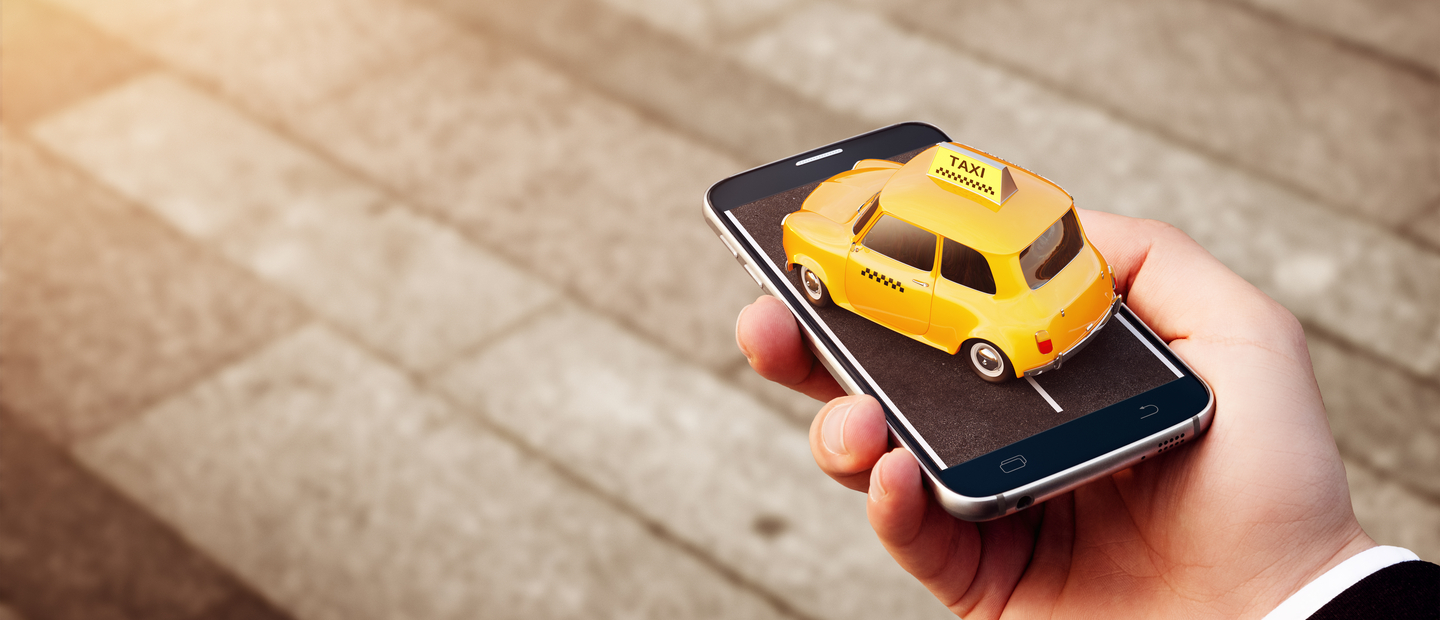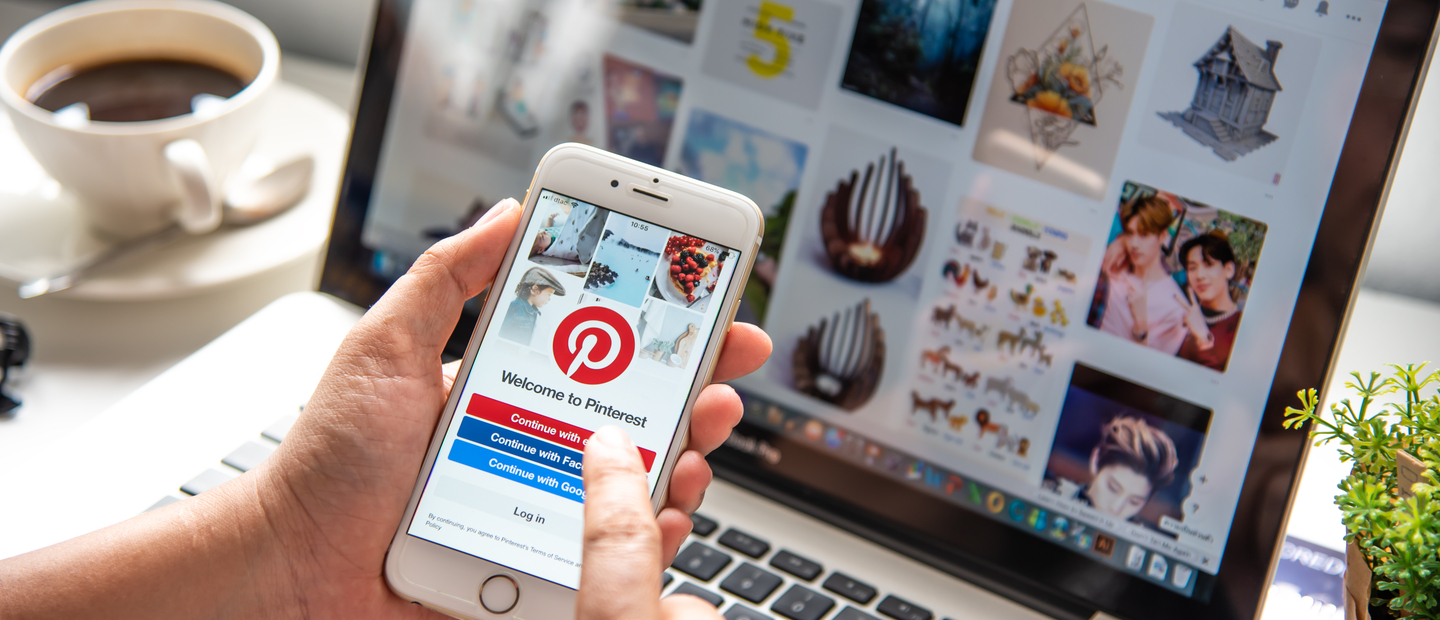How to Develop a Food Delivery App: The Ultimate Guide
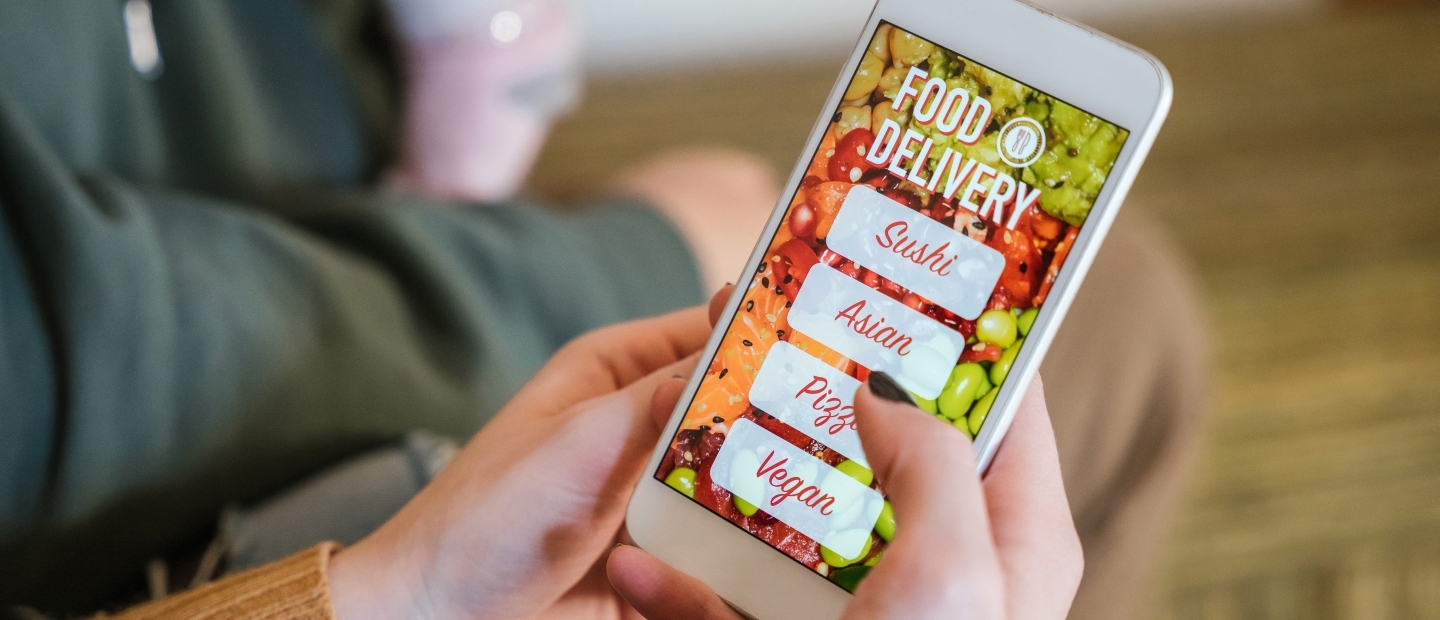
Food delivery app development is a must for companies in the HoReCa industry if they want to retain customers. Modern people appreciate tasty, hot meals just as much as the ability to order them in a few clicks. In fact, the number of users in the food delivery segment is predicted to reach 2,644.2 million by 2027.
Appealing visual menus, integrations with digital wallets, and reward or discount programs make users choose one app over the other. Not to mention how fundamental a carefully designed user experience is when it comes to ordering food, substituting ingredients, or filtering our allergens.
Food delivery app development is more complex than one might think, but the companies considering it are in the right place at the right time. With a market this large, food development applications seem like a sound investment.
Our logistics software development team has already built several food delivery apps, including one for a five-star food delivery service, and we can tell that the outlook for this kind of software is very promising. If you are interested in food delivery software development services, you can always contact us.
Food Delivery App Revenue and Usage Statistics
According to Statista, in 2022, the global online food delivery sector is worth $130.2 billion, and in five years, this value is predicted to rise to $223.7 billion. The numbers clearly indicate a robust market with demand strong enough to maintain growth even in tough economic conditions. This isn’t surprising since people are only getting busier and often order food delivery on the go.
Grand View Research reports that the market is mainly driven by smartphone and internet users. Naturally, ordering food via phone calls has become outdated.
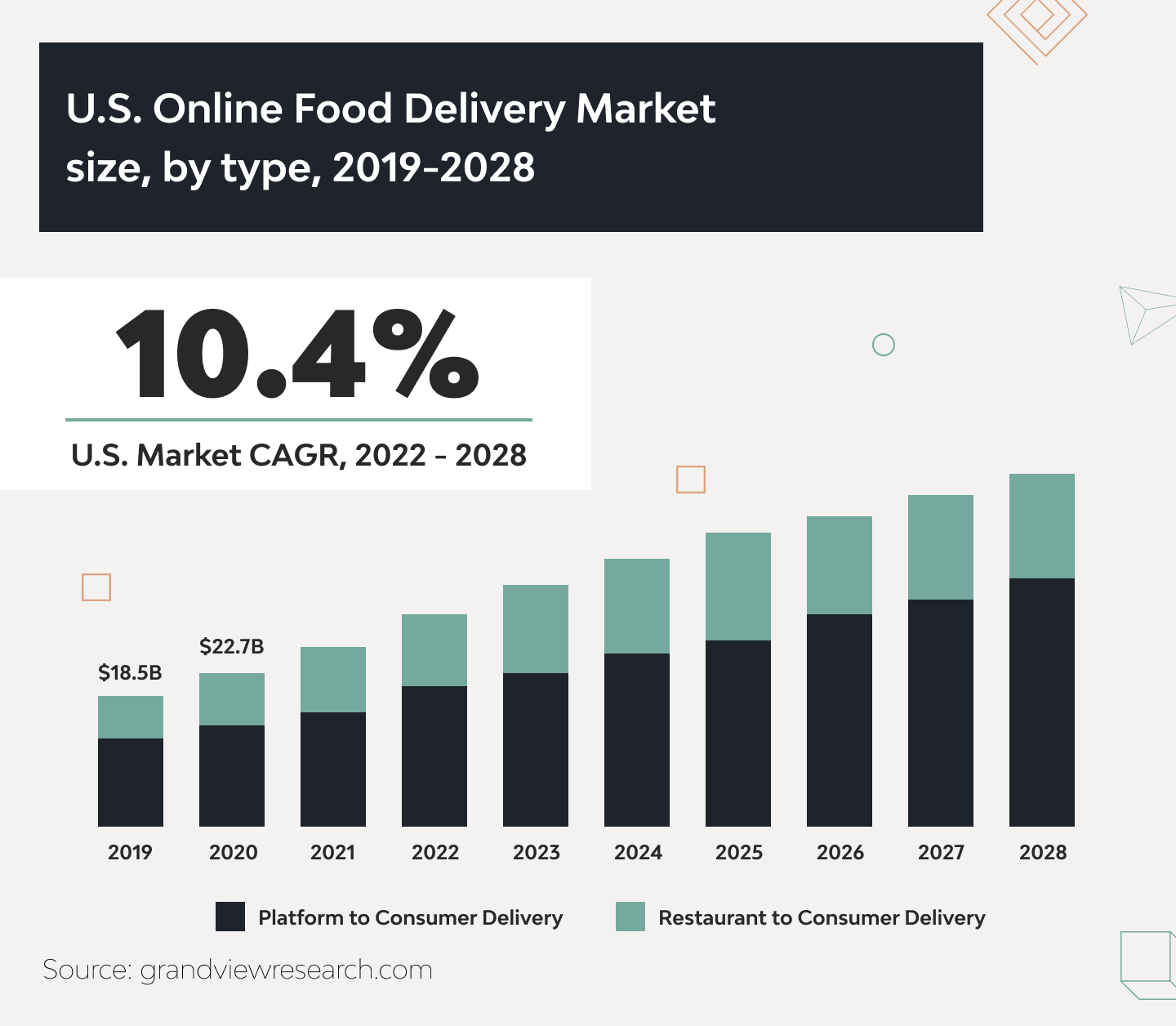
Instead, some food networks invest in their own delivery services and fully manage the risks and rewards themselves. Others join platforms like DoorDash, Uber Eats, Zomato, or Grubhub, accepting the rules and limitations of the provider.
That being said, in March 2022, DoorDash topped the online food delivery industry in the United States with a market share of 59%. Meanwhile, Uber Eats came in second with a 24% market share.
Food delivery apps might all seem the same to the user, but the top apps are built on specific strategies and operate using different business models. Other than convenience, they offer a myriad of features (personalization, user experience, order status, live tracking, etc.) that make them stand out. The importance of digital transformation in this context lies in continuously innovating, enhancing user experiences, and staying competitive in a rapidly evolving market.
What to Consider Before Developing a Food Delivery App
Many steps, discussions, and details go into making an app for food delivery. To avoid confusion and explain the process step by step, we will demonstrate the major points of food delivery software development and launch. Let’s take a detailed look at the different steps required to create a food delivery app.
1. Define Your Niche and Research Your Target Market
A company that considers food delivery application development has probably already researched the market and ensured it’s a viable idea. However, we advise our clients to check if they’ve answered the following questions:
- Which age group is your primary target?
- What personas would make ideal consumers?
- What cuisines would you offer – vegan/gluten-free/Italian/Mediterranean/Mexican, or a mix?
- Which geographical area will you start in?
- What is the consumer demographic of that area? What kind of food do they like?
- How will your offerings (food, tech, and delivery) differ from the existing ones?
Regardless of the age groups that are going to use the application, its logic should be dead-easy to follow and the user experience — intuitive. Ideally, users would only need to place an order, enter their contact information and address, and pay through a preferred method (online/offline).
Broadening your presence with smart devices, social media handles, digital assistants, and chatbots is also a nice touch.
Other features users might enjoy include:
- Instant ordering
- One-touch payment
- On-time delivery
- Multi-device availability
- Voice assistant-enabled interactions
- Social media integration
Dominos, a global pizza restaurant chain, is a good example of the latter: it lets users order a pizza by simply tweeting a pizza emoji.
2. Choose a Food Delivery Business Model
These are the popular delivery business models used by the top players and our clients, along with their pros and cons.
- The order-only model. This model brings restaurants and customers together. Unlike the order-and-delivery model, it allows customers to place orders but leaves the delivery to the restaurant. Zomato is successfully using it.
EditPros Cons There’s no need to build your own delivery network, so it’s relatively easy to operate. Because it can only feature restaurants ready to deliver on their own, the menu can be quite limited. Take-away kitchens and small restaurants demand it heavily to expand their reach. There’s little control over food quality, packaging, and delivery times. - The order-and-delivery model. As the name suggests, this model covers both ordering and delivery. This is the model used by Uber Eats. It’s more profitable than the order-only model, as you can charge an additional fee for delivery. The fee depends on the distance to the customer. On the other hand, this model is more complex as it’s necessary to develop the flow for drivers’ onboarding into the system, define the way of payments to them and how to check the delivery quality.
EditPros Cons The variety of offerings and an integrated delivery method outperform the ordering-only alternatives. You need more delivery personnel to deliver orders without delays during busy lunch hours. The admin can ensure a timely and efficient food delivery process. It’s still difficult to control the quality and packaging of food, despite full control of the delivery process. - The full-stack model. It is more than just managing orders or purchase orders and deliveries. The full-stack model requires at least one ghost kitchen. It also fits with restaurants that prefer to do everything on-site, from preparing meals to delivering them directly to customers’ homes. Domino’s is an example of a restaurant chain that follows this business model.
EditPros Cons The risk of reputational damage is low when all activities, from preparation to packaging and delivery, are managed under one roof. The setup cost of this model is high because it involves all food preparation and delivery. Restaurants can save money they would pay to third-party platforms. Marketing efforts are also part of the responsibilities, so an additional budget is required.
What these three models have in common is the dependence on digital technology to bring their offerings online.
3. Consider Your Food Delivery App Architecture
Depending on the chosen business model, the number of actors involved in the process will differ. Accordingly, this will affect the product’s complexity. Restaurants and customers are the two main players in food ordering. When a business model includes delivering food, delivery people join in. Each of them performs specific actions that should be considered when designing the architecture of a food delivery application.
To visualize the logic of an app with three roles (restaurant, client, and delivery person), let’s examine one of our case studies.
Azyan is a delivery service that matches couriers with customers seeking food delivery. Building comprehensive app logic was one of the challenges, given the various functions and permissions associated with different roles.
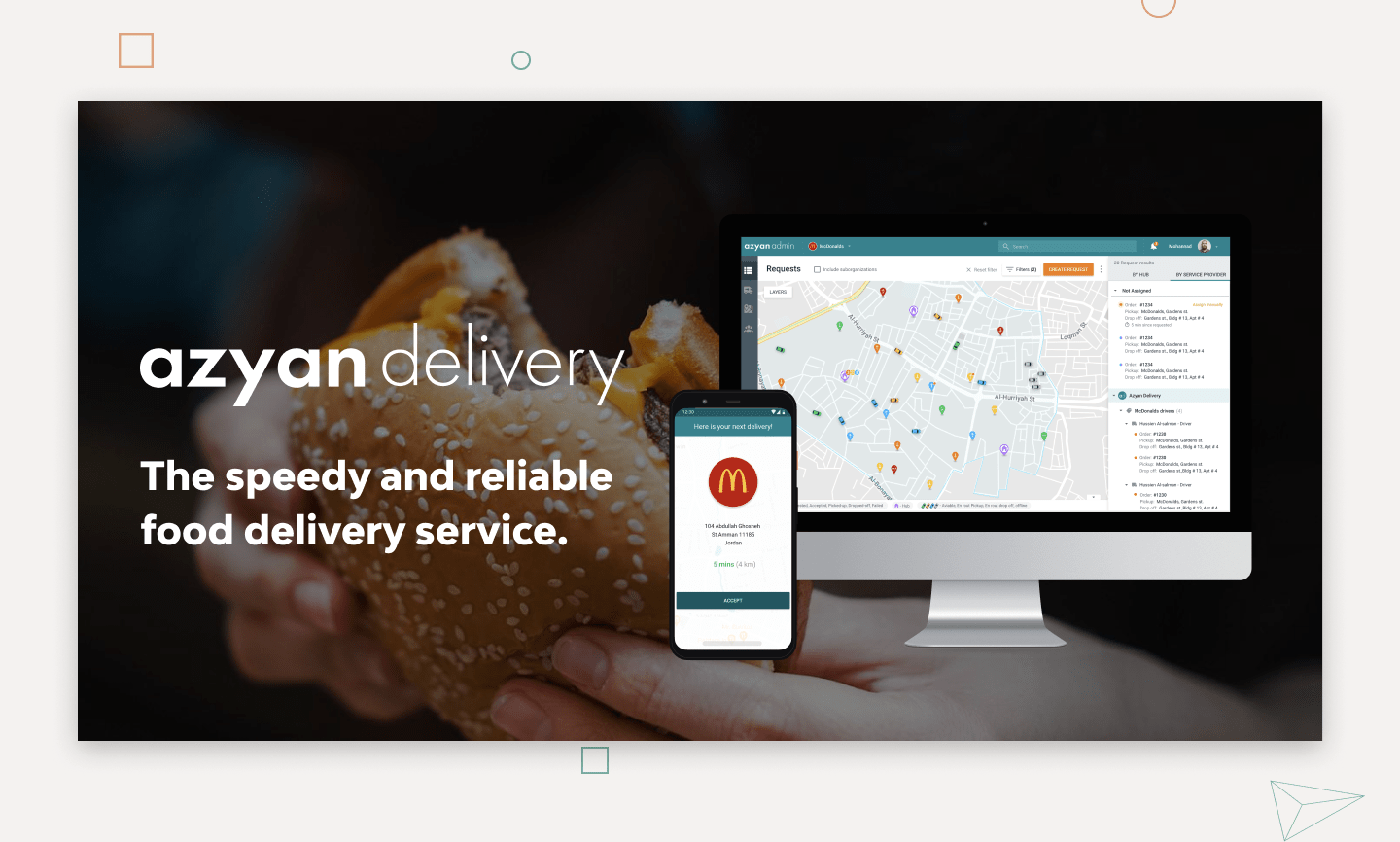
Ultimately, we developed the following business logic:
- A customer places an order.
- The system sends the request to the kitchen to start preparing the food.
- The system detects the user’s location and notifies the nearest couriers about the order.
- The courier receives the pickup and delivery location.
- The user tracks the processing steps of the order, including delivery in real-time.
Aside from the challenge of developing the app logic, another one was sending live data to all interfaces. The app had to handle nearly 20,000 requests per day from up to 2,000 service providers. Our solutions to this challenge were as follows:
- Couriers no longer needed to refresh the page to see new orders.
- Drivers could view the latest order updates without refreshing the page as well.
- Users can track the driver’s location and open the door as soon as the package arrives.
We also took extra time to design and develop the backend of the application. Thanks to this, Azyan is now successfully handling heavy loads and can already scale up without performance losses.
Another type of food delivery apps caters to businesses instead of individual clients. Take our other client EatClub as an example.
EatClub is a leading US food delivery service that provides individual lunch delivery services to businesses across the country. They started out in 2010 with a mission to transform office lunch catering services. Now, more than 1,000 companies use their services to order individual lunches for their employees.
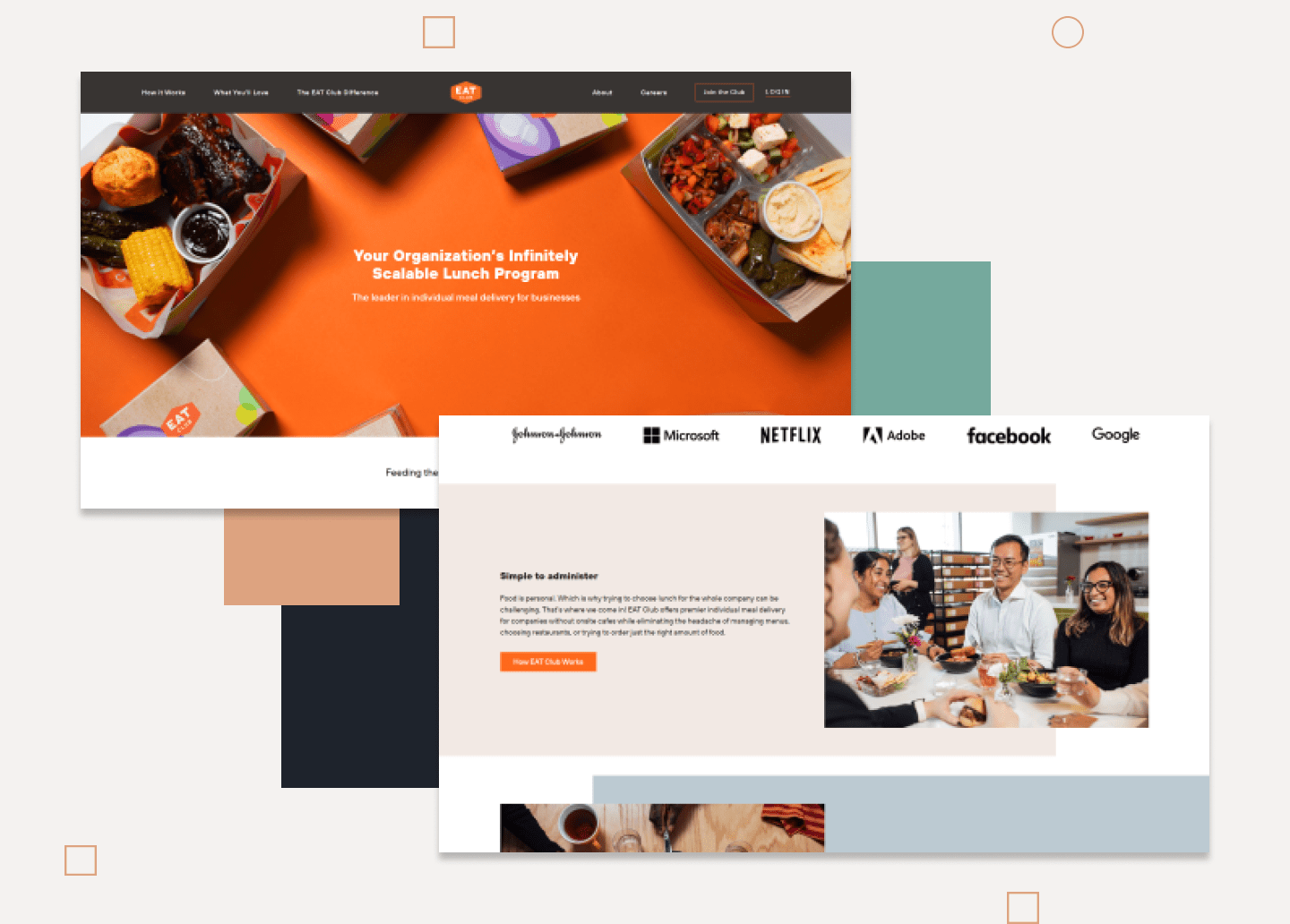
The application has two roles: administrators (a person responsible for catering at the client company) and guests (staff of the client company), allowing guests to order meals up to seven days in advance and administrators to oversee order details from a dashboard. Here’s how it works for guest:
- The administrator registers the company in the app and invites the employees – guests.
- A guest selects meals at least one day in advance and places the order. Menus are available up to 7 days in advance and can be changed until the cut-off time.
- All orders arrive together at the same time, organized into racks, individually labeled for a no-hassle pick-up.
- Guests receive a notification when the food is onsite and pick up their individually packed and signed meal.
John Jascovski, Software Engineering Manager at EAT Club, stresses “Basically, this is how we create the value of what we offer. … We nourish the culture of bringing people together through food.” He explains that “The entire EAT Club experience encompasses multiple variables: from food ordering and taking a break to enjoying the meal with coworkers, all while maximizing work efficiency.” “It’s like meeting up with your favorite friend every day when your food is delivered.”
Regardless of the exact business logic, it’s important for the development team to thoroughly think it through and account for it in the architecture.
4. Determine the Required Food Delivery App Features
Regardless of the roles in a food delivery app, the person ordering food must always be at the center. That is why we advise our clients to start with the features necessary for the user:
- Registration. User onboarding should be short, secure, and seamless. Customers don’t want another set of credentials to manage. You can simplify this by enabling a Google/Facebook/Instagram-based login. Mobile numbers and OTP-based registration/login are also convenient.

- Profile management. If you don’t want to force your customers to enter their addresses every time they place an order, allow them to create and update profiles.
- Search. An interactive search feature will help customers explore new dishes and restaurants. There should also be filters to sort restaurants and dishes so that customers can quickly find what they’re looking for.
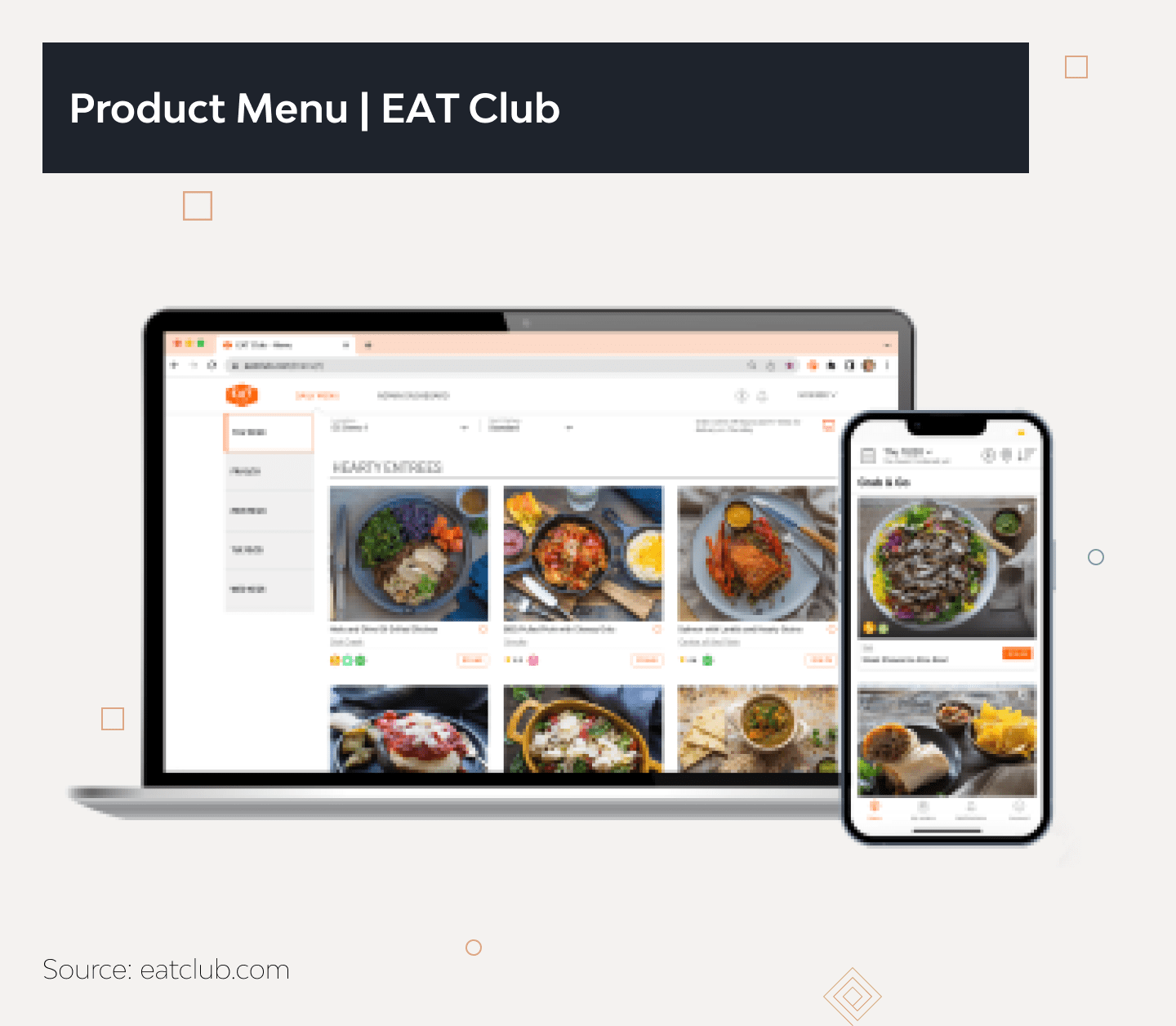
- Recommendations. Customers will be delighted to see popular breakfast/lunch/snack items without having to search for them. Plus, the recommendation engine can offer restaurants similar to the ones the user liked or places with completely different menus as a “surprise me” option.
- Order placing and checkout. It’s a standard feature, but this doesn’t mean it cannot be improved. For example, many apps don’t allow mixing dishes from multiple restaurants in one order, but this is where your app can stand out.
- Payment. Integrate popular payment gateways so that customers can pay using the service of their choice. But don’t forget cash as a payment method. It is also a nice idea to include a tipping option if the user doesn’t have the cash to tip the delivery person.
- Order tracking. We advise visually breaking up the delivery process and showing users the exact status of their orders (confirmed, prepared, packed, picked for delivery, will be delivered in five minutes, etc.).
- Ratings and reviews. This feature can be implemented for different levels: restaurants, dishes, and delivery people. In addition to keeping restaurants on their toes, it gives other customers a trusted information pool for making decisions.
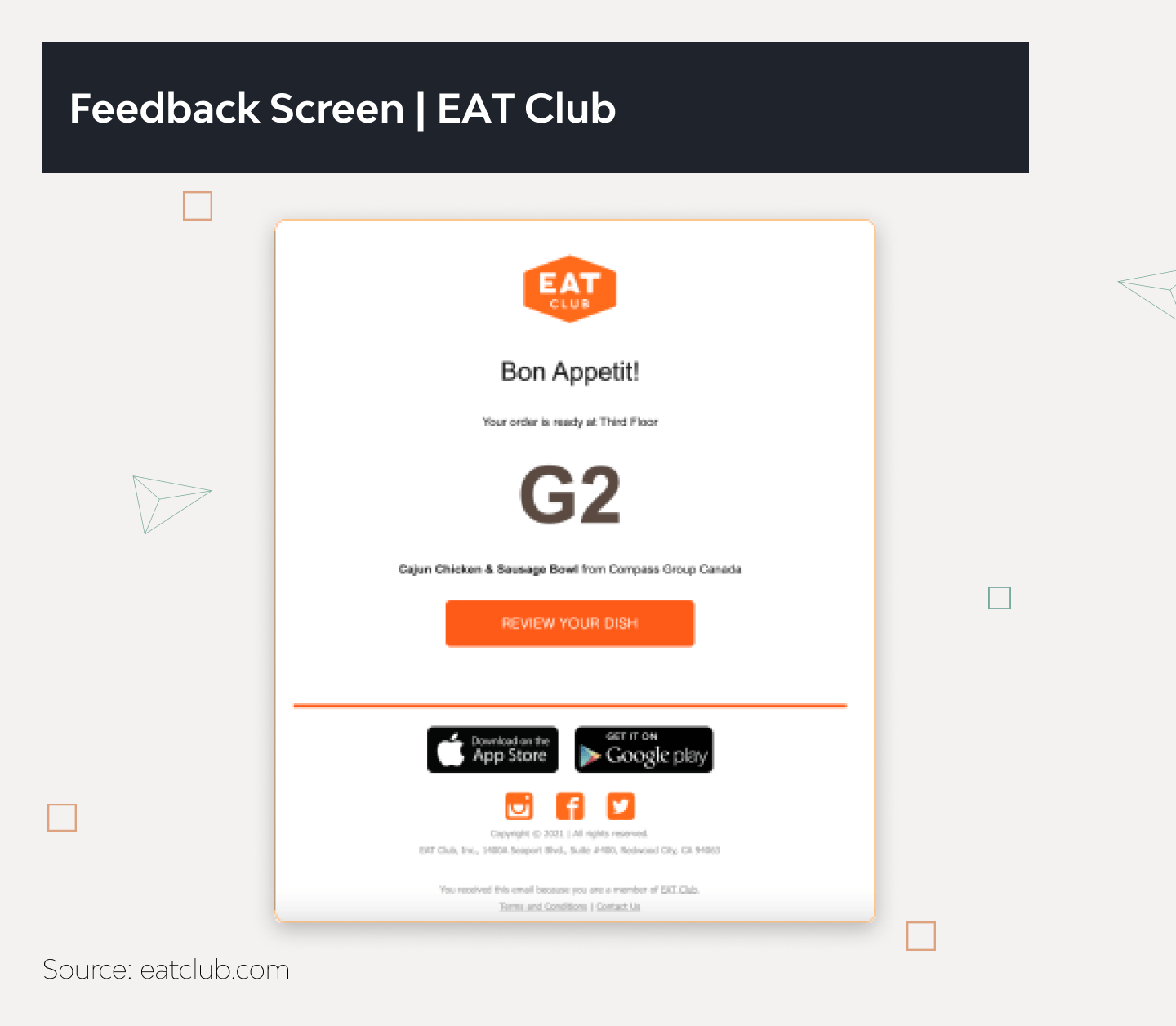
After that, it’s time to think about the functions necessary for the administrator. The admin dashboard shows total orders, commissions, and turnover. This also includes restaurant and courier listings. This is a lot of data, so it’s important to visualize and handle it properly thanks to:
- User accounts. Admins are also users to some extent. Through the admin panel, they configure discount features, accept or reject delivery people, etc. This means that the admin user account should be very secure, so we advise two-factor authentication or biometrics.
- Assigning and managing orders. After customers place their orders, admins process them, and the faster they can do it, the faster the order will be delivered. So it’s important to make processing, assigning, and managing orders as intuitive as possible.
- Content management. This feature allows administrators to change and update information about restaurants and menu items. They should be able to easily add new menu items, update specials, and edit descriptions and images.
- List of delivery people. This list gives admins basic information about each delivery person and their work, such as the number of successful deliveries, the average delivery time, the time they have worked with the company, and more.
Speaking of delivery people, here are the functions they need to deliver orders on time, manage information, and communicate with the client:
- Registering and customizing profiles. Couriers’ profiles contain their names, photos, and phone numbers so that clients can contact them in case of emergency. For management purposes, the courier profile must have a history of completed orders, reviews, and ratings.
- List of available orders. Each delivery person should be able to evaluate the list of available orders within a set radius. Chronological sorting, from the newest orders to the oldest or vice versa, is also a helpful feature.
- GPS and navigation. This critical feature is usually easy to implement thanks to Google Maps and other integrations. Or implement geolocation using React Native. And the functionality should work both ways: the delivery person should see the pickup and delivery locations, while the customers should be able to track their delivery in real-time from their user panel.
- In-app chatting. The application should have several options for contacting people (via messaging or calling) because when time is at stake, the delivery person should be able to quickly contact the restaurant or the client without having to look for their number or manually dialing it. Also, this feature will allow effective communication on problematic issues, like, non-delivery of the order, delivery delay, or the wrong delivery.
- Status update. Delivery people should be able to change order status to let the restaurant and the client know that they’re on their way or that the food was delivered.
There are plenty of other features that will be useful in a food delivery application, so it’s nice to gather a team and brainstorm the functionality of the app. However, it’s important to also include the development team in the discussion since they will be the ones developing the solution.
5. Select Your Technology Stack
Once you consolidate your app features, you need to zero in on the technology that will help you bring your idea alive.
Given our extensive experience developing applications, we recommend the following food delivery app technology stack:
- User onboarding and login. Instead of asking your users to create another account and choose another password, give them the option to register via a social media account. Facebook/Google Software Development Kits (SDK) are readily available for enabling this. Not only will this keep things convenient for your users, but you also won’t need to reinvent the wheel.
- Background tracking. An important feature that will let you use location-related data. While creating an online food delivery app for one of our clients, we discovered that writing native code to start a foreground service works well.
- Restaurant listings. There are popular APIs (e.g., GrubHub or FourSquare) that do an excellent job of displaying location-specific recommendations.
- Secure payments. This module requires integration of all major payment gateways and wallets, including Google Pay, Amazon Pay, Stripe, iOS Wallet, Netbanking. Keep the cash-on-delivery option open for those who avoid online transactions.
- Data storage. Customers and staff will trust this application with their personal data. This requires a secure storage system. Cloud storage solutions from big players such as Amazon (AWS), Microsoft (Azure), and Google are secure and reliable.
- Analytics. Google Analytics offers a powerful and easy-to-use solution for extracting insights from data. FireBase and Mix Panel are other reliable options.
While these third-party solutions minimize the need to develop your own services, it’s still vital to have technology experts on your team. For instance, they will be responsible for connecting third-party products to the system via APIs.
API Integration for Your Food Delivery App
There’s a variety of services you can use to diversify your feature set, from payment providers (Braintree, FreedomPay) to analytics and reporting tools (Looker). We have experienced that the following APIs come in handy most often when developing a food delivery app:
- Google Places API auto-completes addresses as you type.
- Foursquare API allows access to data about different venues, their ratings, and reviews.
- Uber Eats API is suitable for merchants working with the Uber Eats platform. This API allows you to manage restaurants and menu items and accept or decline orders on Uber Eats.
- GrubHub API is a widely used technology among restaurants that allows them to join the GrubHub community and reach users looking for local dining options.
- MapBox API allows you to access all Mapbox services, including maps, navigation, and search. With its help, it is possible to predict accurate travel times or even detect traffic incidents to avoid delivery delays.
- Google Matrix API is another solution to calculate delivery distance and estimate travel time.
- Radar API is a geofencing solution for place detection and delivery tracking.
- Braintree API is an efficient way to integrate Braintree payment services into a food delivery app.
- Looker API provides a variety of Looker tools, such as report generation with business intelligence and data visualization.
There are hundreds of other API integrations for all kinds of additional services, like taxation. Some of them are free, while others may be paid, so consider them when budgeting the app.
What Affects the Budget of Food Delivery App Development
In short, it’s the product business model that affects the end cost of the development. Depending on the business model, the product might have a different number of actors and, accordingly, a different number of integrations and supported platforms.
Is it a web app only, or is it accompanied with a mobile app as well? A web app only would be a cheaper option. Though, If GPS tracking and push notifications are the required features, it should be a mobile app. If it’s a mobile app, is it native (developed separately for iOS and Android), or is it multiplatform? Answers to these questions may give a hint on how complex, meaning, expensive the product will be.
Though, there are a number of typical expenses incurred during the development of a new food delivery app:
-
- Planning and product development.. Most important part of the product creation process. Gathering requirements, defining functionalities, technical architecture, planning, and software development are the core activities. Depending on the business model, reserve a portion of your budget (typically 50-60%) for hiring quality professionals who would drive this phase.
- Meetings. Strategizing, brainstorming, and collaboration require stakeholders to come together, which demands budget allocation.
- Testing. Most bugs have to be fixed before the product or feature launch. Set aside a part of your budget for a good testing team and the tools they need to work.
- Promotion, marketing, and SEO. Hire experienced marketing specialists and have your website content written by professionals who know Search Engine Optimization (SEO) concepts inside out. Add sharing buttons to your content and keep it updated – this will guarantee continuous traffic through audience engagement.
The cost of developing a food delivery app can vary, depending on the features, tech stack, API integrations, and more. The technical team are the ones who can estimate the overall cost of food delivery software development, especially after they go through the discovery phase. During this phase, they design a high-level requirements document that helps understand the overall plan and expenses better.
The discovery phase typically takes somewhere between a month and a month and a half. This is when all ideas crystallize, and the app starts to take shape. The requirements, functional specifications, UX design, and prototyping phases will help define the scope and determine the direction of the project.
Cost Estimation for a Food Delivery App
The actual food delivery app development cost is a combination of effort, expertise, and hourly rates. Depending on the apps’ complexity, the set of features will differ a lot. For example, if the product involves delivery, there should be an onboarding flow for the couriers, verification of their legitimacy, a separate payment system for them and a three-side chat for communication between admins, couriers and customers. All this adds complexity and price to the development.
On the contrary, if the request limits to the development of the basic app with a number of basic features, it definitely will be cheaper. Here’s a rough breakdown of costs that will give you a reasonable idea about the total billable hours:
| Feature | Number of hours |
|---|---|
| Registration | From 2-3 days |
| Profile management | From 1-2 days |
| Search | From 4 days |
| Preferences on the homepage | From 1-2 days |
| Order placing and checkout | From 1-2 weeks |
| Order tracking | From 3-4 days |
| Payment | From 1-2 weeks |
| Ratings and reviews | About 2-3 days |
| Notifications | About 2-3 days |
| Offers, coupons, rewards, and loyalty benefits | From 1 week |
This list is just an example without going into too much detail regarding each feature depth. Each feature will interact with other features thus impacting each estimate.
On average, the development will take a minimum of 200 man-days that can grow up to 420 man-days, depending on the exact features of the app and their combination. The hourly rate of skilled software professionals is usually $40 and up.
These numbers are general guidelines, but if you want a more detailed and accurate estimate, get in touch with us. We’ll be happy to evaluate your plan and generate a customized quote for your food delivery app.
Conclusion
No matter how tough the economic scenario is, good business models put customers at the center of everything they do. By doing so, the business stands to gain and sustain a competitive advantage over others. Apps for food delivery have become a necessity rather than a luxury, as many governments have categorized online food and grocery delivery as an “essential” service.
So put on your thinking cap, work on the plan for your app, and get the ball rolling. If you need professional consultation to make your own food delivery app, fill out our contact form, and Django Stars’ representatives will be happy to respond.
- How long does it take to build a food-ordering app?
- The time it takes to develop a food delivery app depends on the complexity of the app logic and the number of features you need. In general, you can expect at least 200 man-days that can grow up to 420 man-days.
- What is the minimum cost to develop a food delivery app?
- The cost of food delivery app development depends on your business model and integration level. The hourly rate of a competent developer starts at $40. Considering that a food delivery app takes at least 200 man-days to develop, the price starts at $64,000.
- How to reduce the cost of developing a food-ordering app?
- There are two ways to reduce the cost of a food ordering app: short-term and long-term. In the first case, you can minimize the cost by reducing the number of features. In the second case, you can delegate this task to a reliable digital transformation partner who will help you recoup your investment and subsequently increase the app revenue.


